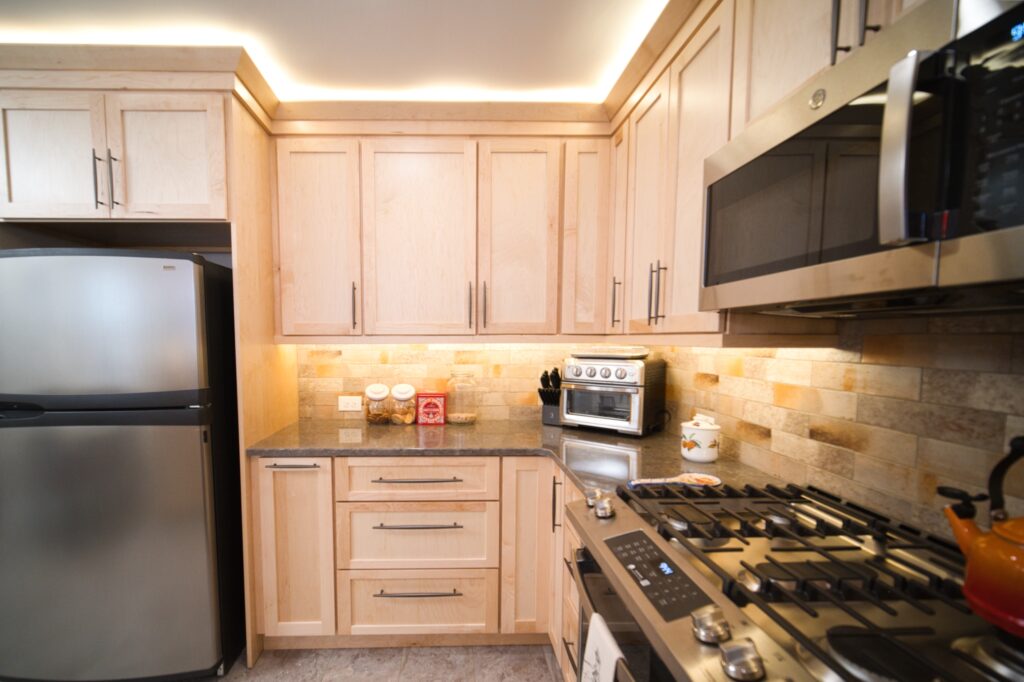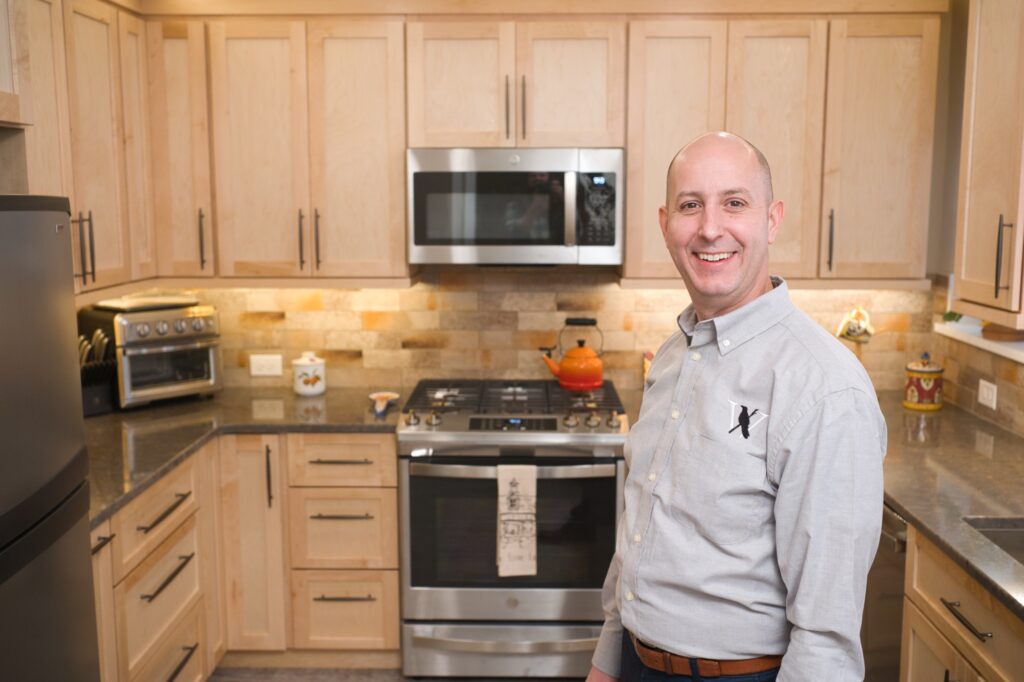
Eat-in kitchen designs offer practical solutions for modern homes in Montgomery County, blending style and functionality for family living.

Eat-in kitchen designs combine cooking and dining spaces, offering a convenient and cozy area for meals and gatherings. These designs are popular in Montgomery County, Pennsylvania homes, where families value both functionality and style in their living spaces.
Eat-in kitchens have become a staple in Montgomery County homes. These designs cater to the busy lifestyles of local families, offering a space where parents can prepare meals while keeping an eye on kids doing homework. The casual atmosphere of eat-in kitchens also aligns with the relaxed suburban vibe of the area.
Many homeowners in towns like Narberth and Bryn Mawr are renovating their older homes to include eat-in kitchens. This trend reflects a desire for more open, multifunctional spaces that suit modern family life.
Not every home in Montgomery County has a spacious kitchen. For those with limited square footage, clever design strategies can create functional eat-in areas without sacrificing cooking space.
Corner nooks are a smart solution for smaller eat-in kitchen designs. By tucking a small table and chairs or a built-in bench into a corner, you can create a cozy dining spot that doesn’t eat up too much floor space. This works well in the charming rowhouses found in areas like Conshohocken.
For the ultimate in space-saving, consider a fold-down table mounted on the wall. When not in use, it can be folded up to free up floor space. This is particularly useful in older homes in historic districts like Ardmore, where kitchen space might be at a premium.
Kitchen islands have become a popular feature in Montgomery County homes, offering both additional workspace and casual seating options.
A raised bar on one side of the island creates a clear distinction between the prep area and the dining space. This design is common in newer homes in areas like Blue Bell, where open-concept living is the norm.
For larger families, an extended island with seating on one or more sides can serve as the main dining area. This setup is often seen in spacious kitchens in Upper Dublin and Lower Merion townships.
Banquette seating is a cozy and space-efficient option for eat-in kitchens. It’s particularly well-suited to the colonial and craftsman-style homes common in Montgomery County.
Window seats with a dining table create a bright, inviting spot for meals. This design takes advantage of natural light and views, which is especially appealing in leafy suburbs like Ambler and Fort Washington.
L-shaped banquettes can turn an awkward corner into a charming dining nook. This setup works well in the quirky layouts of some older homes in Jenkintown and Glenside.
Proper lighting is crucial in eat-in kitchens, as it needs to serve both functional and atmospheric purposes.
Bright, focused lighting over countertops and cooking areas ensures safe and efficient meal preparation. Under-cabinet LED strips are a popular choice in Montgomery County kitchens.
Softer, warmer lighting over the dining area creates a cozy atmosphere for meals. Pendant lights or chandeliers can add a decorative touch while providing the right amount of illumination.
Choosing the right color scheme can help blend the cooking and dining areas in an eat-in kitchen.
Neutral colors like whites, grays, and beiges create a seamless flow between the cooking and dining spaces. This approach is common in the newer construction homes in areas like Worcester and Skippack.
Using accent colors can help define different areas within the eat-in kitchen. For example, a pop of color on dining chairs or a backsplash can create visual interest without disrupting the overall flow.
Effective storage is key to keeping eat-in kitchens tidy and functional.
Incorporating storage near the dining area keeps dishes and linens close at hand. This is particularly useful in the eat-in kitchen designs often found in Norristown and Pottstown.
Benches with hidden storage or tables with built-in shelves can provide extra space for kitchen items. This type of furniture is gaining popularity in Montgomery County homes as residents look for ways to maximize space.
Choosing the right flooring can help define the eat-in kitchen designs space and ensure durability.
Hardwood floors are a classic choice that works well in both cooking and dining areas. They’re particularly popular in the historic homes of Cheltenham and Lower Moreland.
Tile flooring offers easy maintenance and can withstand heavy foot traffic. It’s a practical choice for families with young children, which is common in family-friendly communities like Plymouth Meeting.
Modern eat-in kitchens often include tech features to enhance functionality.
Built-in charging stations keep devices powered up without cluttering the dining area. This is a must-have for many Montgomery County families who rely on technology for work and school.
Smart refrigerators and ovens can make meal planning and preparation easier. These high-tech additions are becoming more common in upscale homes in areas like Lower Gwynedd and Whitpain.
Many Montgomery County homes feature outdoor living spaces, and eat-in kitchens can be designed to connect with these areas.
Large sliding doors that open onto a patio or deck can extend the dining area outdoors. This is a popular feature in homes in Horsham and Upper Moreland, where outdoor entertaining is common.
Using the same flooring material inside and out can create a seamless transition between indoor and outdoor dining spaces. This works well with the indoor-outdoor lifestyle enjoyed by many Montgomery County residents.
Inclusive design ensures that eat-in kitchens are accessible to all family members.

Counters and tables that can be raised or lowered accommodate users of different heights and those who use wheelchairs. This type of thoughtful design is becoming more common in Montgomery County homes.
Ensuring there’s plenty of space to maneuver between the cooking and dining areas is crucial for accessibility. This is particularly important in multigenerational homes, which are becoming more common in the area.
Sustainability is a growing concern for many Montgomery County homeowners.
Choosing energy-efficient refrigerators, dishwashers, and ovens can reduce the environmental impact of the eat-in kitchen. Many residents in eco-conscious communities like Narberth are prioritizing these options.

Using sustainable materials like bamboo flooring or recycled glass countertops aligns with the environmental values of many Montgomery County residents.
Creating an eat-in kitchen that’s both beautiful and practical is the ultimate goal for many homeowners.
Quartz countertops offer both durability and aesthetic appeal, making them a popular choice in Montgomery County eat-in kitchens.
Open shelving can display attractive dishes while providing easy access to meals. This design feature is common in the trendy kitchens of Ardmore and Bryn Mawr.
| Layout | Description | Best for |
|---|---|---|
| L-shaped with island | Kitchen along two walls with central island for dining | Larger, open-concept homes |
| Galley with dining nook | Long, narrow kitchen with table at one end | Older homes with limited space |
| U-shaped with peninsula | Wrap-around kitchen with extended counter for seating | Mid-sized homes with defined kitchen area |
| Open plan with dining area | Seamless flow between kitchen and dining space | New construction and renovated homes |
| Surface | Material | Pros | Cons |
|---|---|---|---|
| Countertops | Quartz | Durable, low maintenance | Can be expensive |
| Flooring | Hardwood | Warm, classic look | Requires regular care |
| Backsplash | Ceramic tile | Durable, low-maintenance | Grout can be hard to maintain |
| Table top | Butcher block | Easy to clean, a variety of styles | Needs regular oiling |
Eat-in kitchens have become a staple in Montgomery County homes, offering a perfect blend of functionality and comfort. Whether you’re in a spacious suburban house in Lower Merion or a cozy townhome in Conshohocken, there’s an eat-in kitchen design that can work for your space and lifestyle.
Remember that the best eat-in kitchen is one that fits your family’s needs and habits. Consider how you use your kitchen, the size of your family, and your entertaining style when planning your design. With careful planning and thoughtful choices, you can create an eat-in kitchen that becomes the heart of your Montgomery County home. Eat-in kitchen designs offer practical solutions for modern homes in Montgomery County, blending style and functionality for family living. For more information, you can visit our website or contact us.
